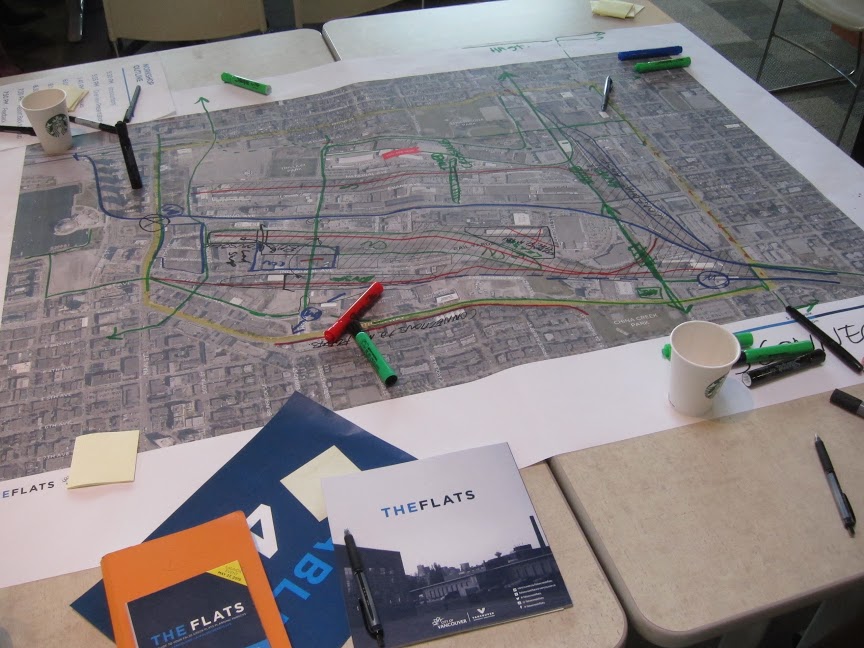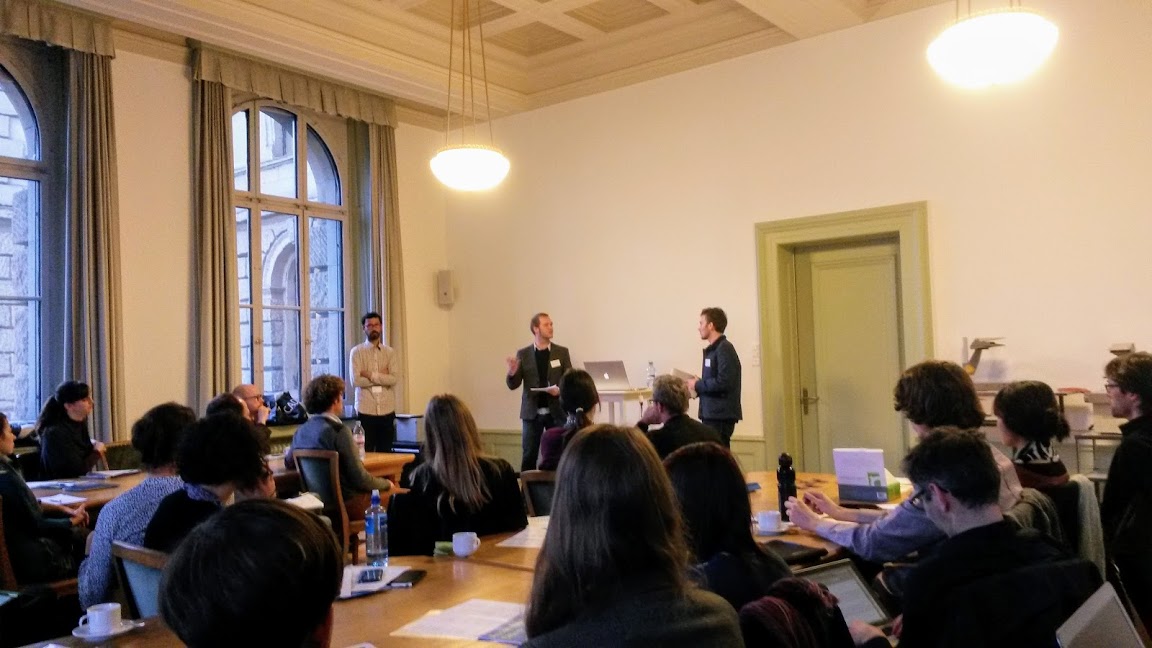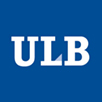
Mapping relations in a planning workshop. Photo: Marko Marskamp
Published in September 2017 by Palgrave Macmillan, Relational Planning: Tracing Artefacts, Agency and Practices is co-edited by 4CITIES alumni Marko Marskamp (Cohort 03) and Julio Paulos (C4), and also features a contribution by Guillén Torres (C6). The volume “builds on recent approaches to complexity and materiality in planning theory by drawing on Science and Technology Studies (STS) of urban issues. It frames planning as a socio-material practice taking place within the multifaceted relations between artefacts, agency and practices.” Field Notes recently reached out to Marko, Julio, and Guillén. Below is part one of our interview.
Q. What is relational planning and why does it matter?
Julio Paulos: Relational planning is ‘many things’. We get that the title might give the impression of a tautology. Saying that planning is relational is sort of obvious. Our pursuit is to coin a concept. Actually, the importance lies within this small segment by stressing the importance of relations that compose planning – from the inside. When I say ‘many things’, I refer to its ontological capacity for analysis. In less scholarly words, I mean the concept is more of a ‘sensibility’ that assumes pluralism. Somehow, we want to dismiss the determinisms that are often dominating in the social sciences. It therefore matters in two ways: by questioning the very definition of planning as an object (of study) and by asking what planning means when it exists outside its usual settings.
Marko Marskamp: I would just like to add to that, and emphasize the exploratory way in which the book employs the concept ‘relational planning.’ We don’t define it but use it to give meaning to the common features of the studies in the book. Accordingly, relational planning is, as far as this book is concerned and at least for now, a particular attitude to the study of planning. It is an important one nonetheless, it unsettles some of the taken-for-granted instruments (land use zoning), rationalities (NIMBY) and strategies (participation) of planning. Eventually, it might push a rethinking of the ways in which planning is to be done.
Q. Where did the idea for the book come from? How did you become editors & contributors and what was the process of putting the book together like?
Marko: In 2015 Julio and I organized, together with our thesis supervisors, an international workshop on how STS (Science & Technology Studies) insights might be useful to the study of planning. This question came from our own research on the actual making of land use plans. The intersection of STS and planning is inspired by the discussions on urban assemblages in urban studies (for an introduction see Farias and Bender 2010). The goal of the workshop was to focus this productive debate and its concepts on the study of planning issues. However, it’s important to note that the book is not simply a publication of the workshop proceedings. The chapters and their framing have developed and changed a lot since their initial presentation two years ago.
Julio: As Marko just mentioned, it all started with the organisation of a workshop. All was new to us. We actually just had the assignment to prepare and invite adequate scholars that fit the wider purpose of our research project. It turned out to be a bit more ‘work’. We had no particular intention to define a full agenda back then. We sort of tried to open up certain themes and to specify our research purpose. Generally, our sense was that urban research could be more rigorous in asking certain questions. The conference call was received well and we took this as a motivation to continue being curious and explorative. The high demand of interest resonated in other organised events in Barcelona or St. Petersburg that tried to continue and refine this debate. The volume does not trace this route expressively but can be seen as the consolidated and introspective product of the many discussions we had over the last couple of years.

Assembling Cities Workshop. Photo: Julio Paulos
Guillén Torres: The workshop that originated the book was my first experience presenting any kind of academic work to an international audience of scholars and other students, and it proved to be extremely useful to help me structure what would later become my master thesis (and later the chapter that I contributed to the book). I would definitely recommend to 4CITIES people to try to share your work on the right fora, particularly because the feedback is invaluable. On the other hand, I have to confess that I suffered horribly turning my thesis into a chapter (a shout-out to Marko and Julio who helped a lot with feedback, by the way!). So perhaps another suggestion I could give to 4CITIES students is to keep in mind that your thesis can later become various articles or a book chapter, etc., and it may make sense to structure it accordingly to make things easier afterwards.
Q. How does the concept of relational planning respond and contribute to other discourses in planning theory? Which theorists does it build on? Which does it critique?
Julio: Well, we do not fight other theories. As far as I am concerned, and I believe Marko feels the same, we position ourselves at a specific intersection that we identified as having a lack. Or more correctly, if I dare say so, a research segment that hasn’t been fully ‘identified’ nor traced. I hope that the 3rd section of the introduction makes this point a bit clearer. Questions like: How do planning practices compose a narrative of certainty inside their facilities; but also out there? are central to the book. Yet they expand to other questions: What more does it tell us about the (urban) society that we inhabit? Or, even further: What ideal urban world is represented?
There are a lot of texts that discuss the neoliberal city or global urbanisation but our research has shown that this is merely one version to address cities (theoretically). We’re not per se advocates of pluralistic worldviews. Rather we’re fond of rethinking agencies. The same applies then to those worldviews, how they collide or sustain each other. Put into Bruno Latour’s words the book invites you ‘to think in terms of nodes that have as many dimensions as they have connections’.
Marko: I’d like to elaborate a little more on the blindspot Julio mentions. Looking at the planning literature today, we find many studies pointing to the difficulties of putting earlier theories of communicative planning into practice. Those theories in turn critique rational planning. The critique goes that planning is more than the production of a physical space, and therefore should concern more people than just a small group of technocratic planners. The proposed participatory planning processes that come out of this critique aim to involve citizens and bring social concerns into planning. A critique of these efforts is again that they tend to pay more attention to process than to substance. In addition, Foucauldian analyses have illustrated that power is not so much redistributed as disguised in a different form.
“Relational planning calls for a more situated and realist approach that focuses on what happens in actual planning work.” (Marko Marskamp)
The attitude of relational planning instructs researchers to look more at practices than discourses. More specifically, it studies planning in terms of the interaction between humans and things, and the effects this produces. As such, power is not an abstract something found in a planning context (e.g. larger-than-life capitalist structures) or in the hands of a single actor (e.g. a wealthy real estate developer), but can be discovered in the very practices that make up the complex network of a planning project.
Q. How might a relational planning perspective contribute to urban studies? Does it frame the urban differently? Does it provide new methods of analysis?
Julio: I believe that we do not frame the urban in any particular sense. One point is that planning relates to urban space. The distance of this connection depends on the subjects that are being addressed. Of course, the title can be misleading since it omits ‘the urban’ completely. It’s a conscious decision. In most chapters, cities or urban issues are the objects of research. This can appear obvious since most planning professionals enact cities as their ‘knowing-objects’. The question would then be, subsequently, how this connection is performed and why is it perceived as obvious. Cities are not always necessarily central to planning.
STS is a very broad and hybrid research field that we try to address in the introduction for its analytical purpose. We try to stress the point why we rely on STS and therefore the introduction can appear rather theoretical (which is contradictory to the essence of STS research). We do not apply one single methodology. We rather want to make the argument to stay closer to the objects and their agency.
Marko: The ideas of relational planning touch upon those of urban assemblages. The latter is influential in urban studies and challenges some of the traditional theories in urban geography. Urban assemblages research is concerned with diverse urban issues; relational planning seeks to understand relationality more generally, for planning as such.
A methodological idea of the two approaches is that relations are best described and understood in the situations themselves. For relational planning this requires researchers to get up close to planning practice. While this type of participant observation is not a new method in planning research, it is rare. Especially hard to find are planning studies with an outsider’s perspective, that is, studies explaining planning with something else than planning.
Guillén: I’d like to add that the approach that Marko and Julio describe in this and the previous question is quite useful for uncovering unsuspected agencies. In that sense, it has an incredible potential to produce original and innovative knowledge. I think Urban Studies can be a bit dogmatic at times, and the STS narrative that this book contributes to might feel very refreshing for those who want to produce explanations that do not feel too far removed from local phenomena.
Q. Why problematize spatial planning?
Julio: Our main interest is to describe planning rather then criticising it. Taking up STS, the very act of accurately describing an object, means to take something out of its script or mould. Madeleine Akrich has named this method ‘sociography’ (a description of all things making up the object). Meticulously pointing at how certain features have been stabilised allow for an understanding of current orders. In our case, unfolding planning situations and putting the associations in perspective shall lead the reader to think that cities and urban experience isn’t necessarily the product of some market logic or control society but that the whole is composed of a variety of parts. Yet all parts together do not always produce the same whole. Another example: maps are often seen as deterministic. Yet the reality that is represented on a map never completely resonates with the reality of urban experiences.
“Spatial planning does not have to be seen as an isolated object of study. By inquiring into planning we recognise how cities, territories and other objects are being identified for social purpose or inscribed into political matters. Putting these tensions on hold and describing them is so much more revealing then reproducing again and again the exact same theories.” (Julio Paulos)
Marko: To me, problematizing means making something unfamiliar. An important reason to do this for planning is, as I mentioned earlier, that both planning practice and theory tend to be rather normative. Isn’t it peculiar that views opposing those of planners in development projects tend to get dismissed as a not-in-my-backyard syndrome? Or, that key planning instruments like zoning or transportation planning have seen little change since their inventions by modern planning? STS is useful in understanding the logics of some familiar planning mechanisms, and so gives us insights into the kind of cities and societies they produce. Inversely and more importantly, we might pause for a moment and reconsider if our planning instruments are up for creating the cities we want. Instead of addressing planning issues with the planning conventions that created them, problematization can be useful in helping us imagine what planning should/could be in this moment.
Part two of this interview will be published on 28 December 2017.


